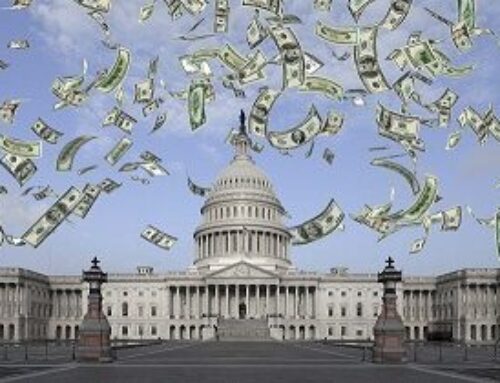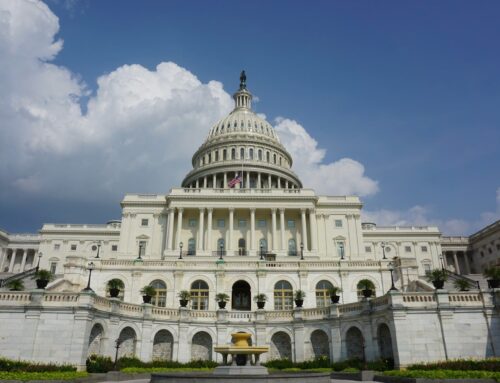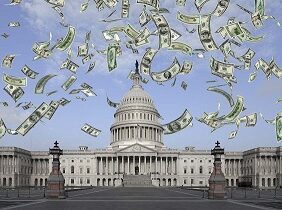In response to the post-pandemic spike in inflation, the Federal Reserve (Fed) responded by rapidly raising short-term interest rates between 2022 and 2023. By July 2023, the Fed had set a target range of 5.25% to 5.5%, the highest level seen since 2001. Despite a notable reduction in inflation, dropping to 3% in June 2024, the lowest level in three years, the Fed has opted to maintain these high fed funds rates through the first half of 2024, a strategy often referred to as keeping rates “high for longer.”
One of the primary reasons the Fed has decided to keep interest rates elevated is to control inflation. The Fed’s mandate includes promoting maximum employment, stable prices, and moderate long-term interest rates, with a specific target of 2% inflation as measured by the personal consumer expenditures price index. While inflation has decreased from its pandemic-era highs, it remains above the Fed’s 2% target.
As inflation has fallen, while nominal interest rates have remained the same, real (inflation-adjusted) interest rates have effectively risen. Higher real interest rates make borrowing more expensive and saving more attractive, slowing economic activity. Despite this, the labor market remains strong, with low unemployment and robust job gains. The Fed’s challenge is to maintain this balance, controlling inflation while keeping the economy moving steadily forward.
The Fed is also concerned about the possibility of a “hard landing,” where reducing rates too soon could reverse the progress made. If rates are lowered prematurely, it might lead to a resurgence in inflation, necessitating even higher rates in the future, which could potentially trigger a recession. Examples include the early 1980s recession, triggered by the Federal Reserve’s drastic interest rate increases to combat inflation, and the 2007-2008 financial crisis, resulting from the housing market bubble burst and subsequent financial panic. The goal is to avoid this scenario by maintaining a steady course until there is more confidence that inflation is under control.
Impact of “High for Longer” Interest Rates on Federal Debt Servicing
Maintaining high interest rates for an extended period significantly raises the cost of servicing the federal debt. The federal funds rate, which influences the interest rates on U.S. Treasury securities, has been held at a high level (5.25% to 5.5%) since July 2023. This has led to a corresponding increase in the interest rates on short-term Treasury bills and other government securities.
As a direct consequence of higher interest rates, the federal government’s interest payments on its debt have surged. In 2024, interest payments are projected to reach $870 billion, a substantial increase from $658 billion in 2023. This trend is expected to continue, with interest costs potentially hitting $1.6 trillion annually by 2034.
The rising cost of debt servicing is consuming a larger portion of the federal budget, crowding out spending on other critical areas. For instance, in 2024, interest payments are expected to surpass defense spending. By 2054, interest costs could take up 34% of all federal revenues, significantly limiting the government’s ability to invest in other priorities.
The combination of high interest rates and a growing national debt exacerbates our long-term fiscal challenges. The Congressional Budget Office (CBO) projects that the federal debt held by the public (not including intra-governmental borrowing) could reach 166% of GDP by 2054 if current trends continue. This structural imbalance between spending and revenues, driven by rising interest costs, poses a significant threat to the nation’s fiscal stability.
The rising costs of federal debt servicing are further exacerbated by the external costs from climate change, which place additional financial strain on the government. Increasingly frequent and severe weather events, such as hurricanes, wildfires, and floods, demand substantial funds for crop insurance, flood insurance, and other disaster programs. These escalating expenses compound the challenges posed by high interest rates, further stretching the federal budget and limiting the government’s ability to address other critical needs.
Policymakers need to find ways to either boost revenues or cut spending, as well as tackle the looming – or in some cases already here – fiscal insolvency of major entitlement programs such as Social Security, Medicare, and Medicaid. These programs are not subject to the annual appropriations process and by law must be funded each year, without the need for a vote by Congress. We need to strike a balance between addressing our current economic needs and ensuring long-term fiscal health.










Get Social